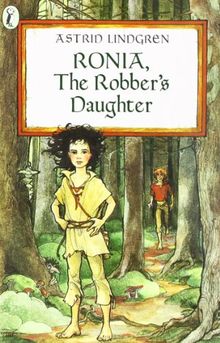Aminah gehört zu uns (Aminah is part of us). Petra Mönter und Susanne Maier

published in 2017
The problem
I see in this book is that the prejudice against dark-skinned children isn’t properly tackled; the girl Aminah is
left with no tools to speak out or defend herself – instead, all the ‘white,
normal’ kids from her class decide to protect her from the older kids, without
letting her stand on her own. Indeed, she belongs to them and they have
appropriated her voice.
As I read somewhere in a racism in children's books manual (Reference: Sprache-Macht-Rassismus. Dokumentation der Fachtagung vom 22. Oktober 2014; Diakonie, Düsseldorf), this book should come with the subtitle - 'for whites only', since it is indeed a book by 'Whites' for 'whites'. It has nothing to do with giving non-Whites more representation or humanising them, but simply instilling in the supposedly all-White readership the need to be tolerant to difference, even though that difference may be shocking, pitiable or simply, unpleasant. Let’s take a closer look at the plot:
Henri and
the blond, blue-eyed protagonist, Ida enter their classroom after the summer
break and is speechless (‘verblüfft’) when they see a new child there – ‘die
Neue sah einfach anders aus, als wir es gewöhnt waren. Sie hatte sehr dunkle
Haut’ (the newcomer looked quite different from what we were used to. Her skin
was very dark). She is asked very slowly what her name is, to which she replies
- ‘I am not stupid, you can speak
normal to me!’ Aminah was born in Syria (never mind most people in Syria are fair-skinned!) and moved to Germany with
her parents. The other kids enter the class and they are all illustrated in a state of shock, whispering or simply startled.
Later at the playground, a group
of older kids start heckling Aminah – we learn that this gang of three were
accustomed to harassing the foreigners (read dark-skinned children) (die
ausländischen Kinder) at school: ‘Wie siehst du denn aus?..bist du in einem
Farbtopf gefallen?’ Aminah is furious when they make fun of her skin colour but
a lot of the kids snigger. Henri and Ida take Aminah back to class. Later at
the playground, the bullying trio are back and this time, their actions are
more aggressive – ‘Ausländer haben hier nichts zu suchen’ and they run away
with Aminah’s jacket. Aminah starts crying while her ‘friends’ stand helplessly
by.
The
following day Aminah is absent. Henri thinks Aminah is afraid to come to school
alone. They gather everyone from their class together and try to find a way to
help. The class prefect says they need to stick together and so, they devise a
plan. The next morning, they pick Aminah up from her house. ‘We are going to
pick you up every morning from now on’, says Henri. Aminah is never given the chance to face the older kids and defend
herself. Later in the city, it’s Henri and Ida, the protagonists who meet the
older girl from the gang and confront her with her racism – Lea is planning to
go to Kenia and Henri mockingly notes that there, all the people are
dark-skinned, hopefully they won’t be so mean to her as she was to Aminah. Does
this change Lea’s thinking and behaviour? Does she apologise to Aminah? Is
Aminah still a victim of their bullying?
Lea and her
gang return the next day and are waiting to taunt Aminah. But they are in for a
surprise - all the kids from Aminah’s class circle the three – Henri and Ida
have their hands around a scared Aminah. Now the class speaks up for a silent,
helpless Aminah – ‘Lasst unsere Freundin in Ruhe…sonst kriegt ihr es mit uns zu
tun’. More and more kids join in to walk Aminah home and pick Aminah up on
mornings - ‘Aminah gehört zu uns. Wer sie wegen ihrer Hautfarbe ärgert,
kriegt es mit uns zu tun.`‘ (Aminah
is a part of us. Whoever annoys her because of her skin colour has to go
through us). Aminah’s voice is effectively usurped, her body and colour absorbed
by all the whiteness surrounding her. The daunting question is – what happens
when the trio finds her alone?
This is no
triumphant book against xenophobia. In fact, I would argue it reinforces
xenophobic feelings through the following:
Aminah is
singled out and deemed strange and undesirable simply because of her skin colour
What is the norm in the classroom in Germany? – white kids, full stop.
The white
normal kids take up Aminah’s conflict and make it their own without dealing
with the real problem – racism.
Aminah’s voice is nonexistent. There is
no interaction or confrontation with her and the kids. She remains an
ostracised secondary character who has to depend on the normal, white kids to
be and feel safe.
As already mentioned in previous posts, it’s also
disturbing to see how many books point to the child’s skin colour as an
automatic sign of strangeness, not belonging, not being able to speak the
German language etc. That darker-skinned persons continue to create such a stir and scandal in
children’s books is not only very distressing but very worrying about the
(self)representation that ‘Germany’ chooses for itself. It’s impossible to
begin to open up the discussion about integration and what constitutes the
national culture when everything that is non-white gets branded as foreign,
strange and undesirable.


